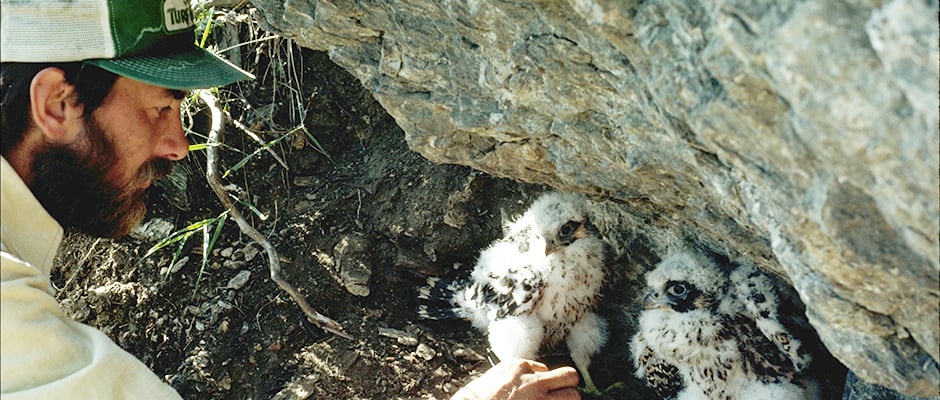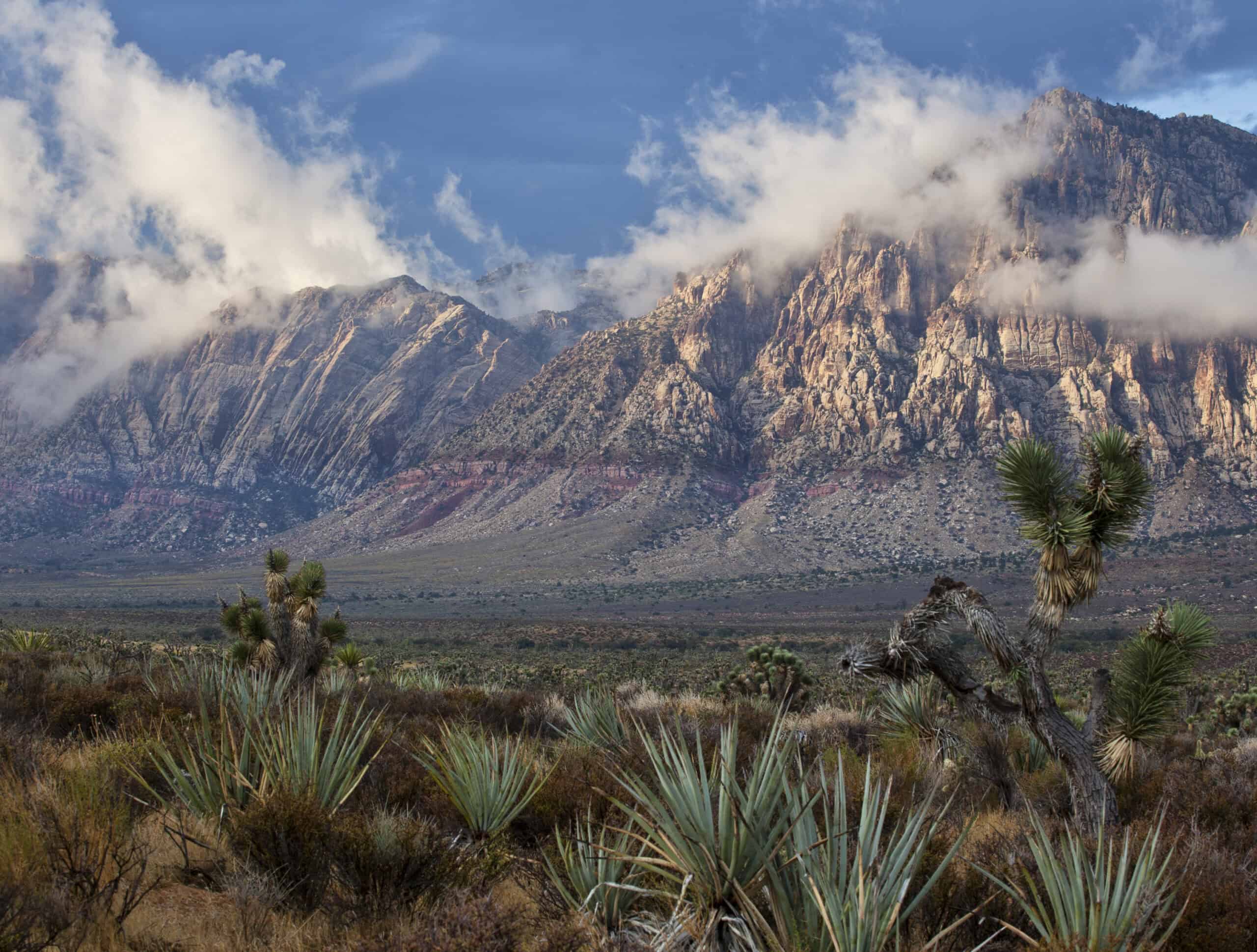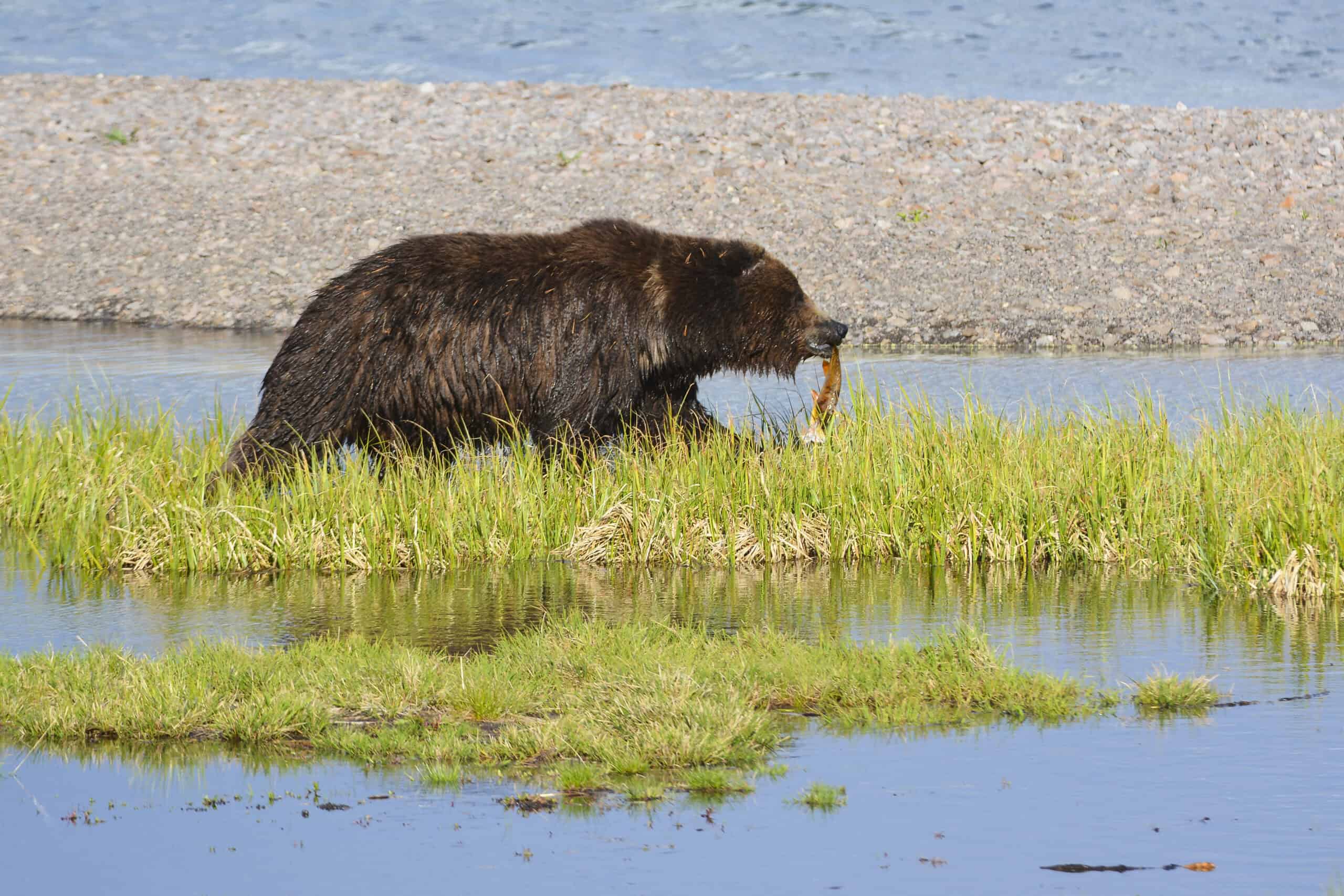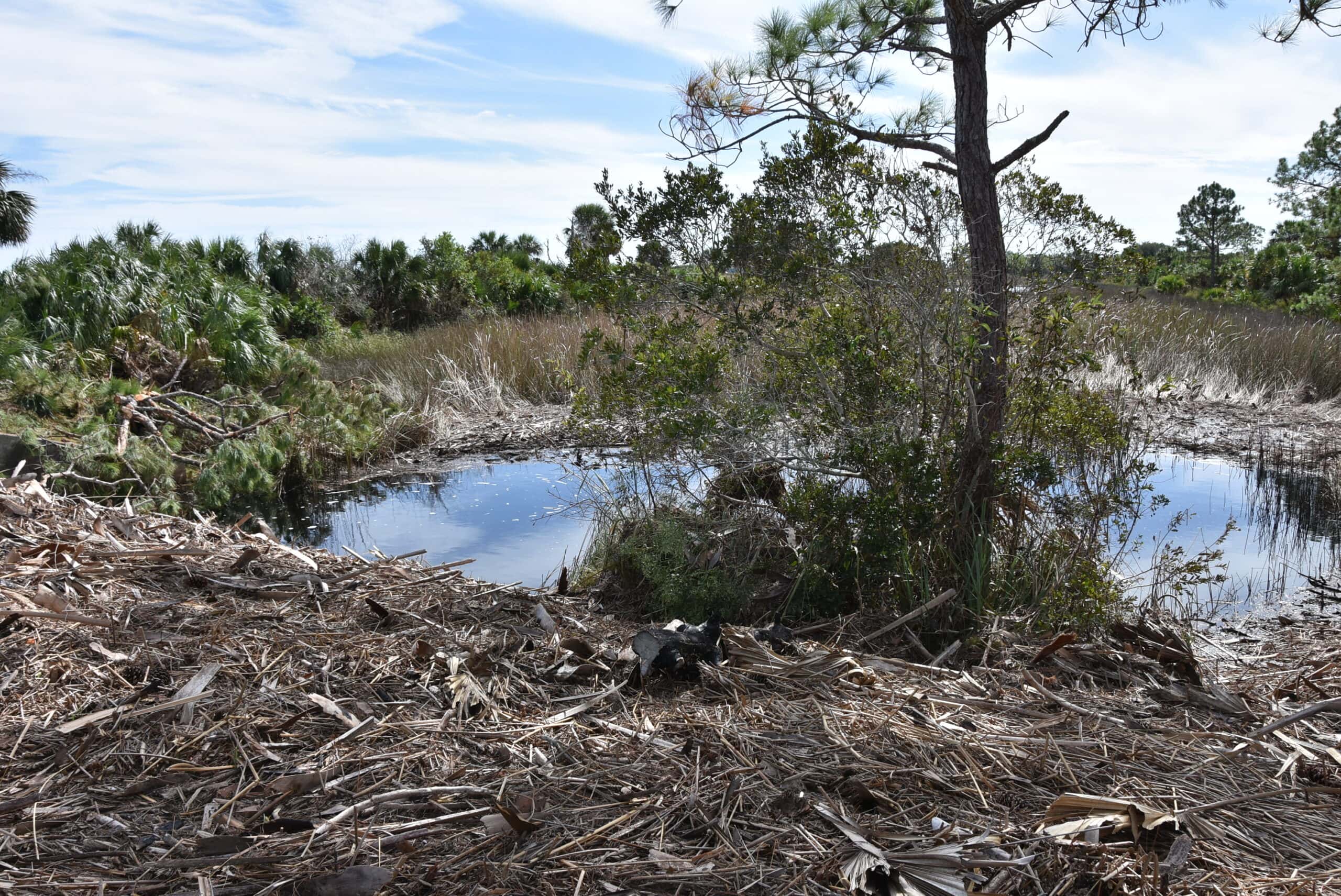Share this article
A falcon legacy
Skip Ambrose hasn’t missed an American peregrine falcon (Falco peregrinus) nesting season in 40 years. Through binoculars and spotting scopes, he has watched the population on the upper Yukon River in Alaska climb from 12 nesting pairs in 1973 to 60 pairs in 2012, a level that holds steady today. Now, his surveys make up one of the longest-running, most consistent wildlife monitoring studies ever conducted — a scientific treasure capturing the entire saga of a species’ recovery. The TWS member, now 70, published his survey data this spring in The Journal of Wildlife Management.
“You can’t really understand any wildlife until you know a few life cycles,” said Ambrose. “It just takes time.”
Ambrose traces his passion for raptors to the mascots at the U.S. Air Force Academy in Colorado, where his father was stationed from 1959 to 1962. Live prairie falcons (Falco mexicanus) would swoop over the football field at half time, entertaining fans and filling the future raptor biologist with awe. Around age 13, Ambrose began helping with the birds’ training, chasing errant falcons on his bike and coaxing them down with a lure.
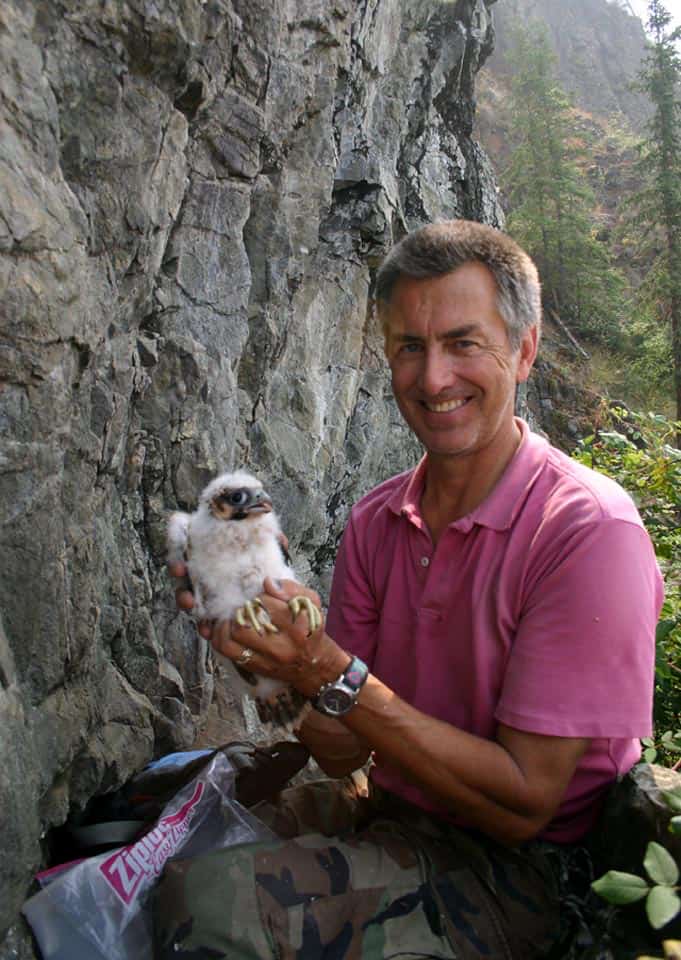
Skip Ambrose holds a peregrine falcon nestling in 2004. The nestling is just under a month old. ©Nikki Guldager
By the time Ambrose finished his own stint in the military in the early ‘70s and started taking classes at the University of Alaska, he was already a raptor expert, according to Bob Ritchie, senior scientist at ABR Environmental Research & Services — a biological and ecological consulting company. Ritchie met Ambrose in a raptor ecology class, and unwittingly launched the four-decade monitoring project when he hired Ambrose as his field assistant.
“I think he probably entered this world with a subliminal passion for birds of prey,” said Ritchie.
Three times that summer in 1973, the young researchers rowed canoes down a 165-mile stretch of the Yukon River, counting peregrines for Ritchie’s master’s thesis on the ecological value of the region. American peregrine falcons had been listed in 1970 under the precursor to the U.S. Endangered Species Act, making them one of the first species to be federally classified as endangered. Ambrose and Ritchie found just 12 nests that year, though they couldn’t know at the time how many more the cliffs should hold. DDT had been banned the year before, and peregrines were just starting to recover from the blow the pesticide had dealt them.
Ambrose and Ritchie rejected popular survey tricks of the day, such as only stopping at known nest sites and shooting a gun to make birds fly — a practice Ambrose says can startle falcons into knocking their own chicks from the nest. Instead, the researchers explored cliffs on foot or watched for hours from the opposite bank, waiting for birds to reveal themselves.
Ambrose continued with the same painstaking approach in 1977, when he began to survey the river as an employee of the U.S. Fish and Wildlife Service. The agency had selected the upper Yukon as a long-term monitoring site for peregrines, and it funded two falcon-counting expeditions per year for more than a decade. Ambrose led all of them. His family often joined him, and Ambrose says the adventures helped instill a lasting love of the outdoors in his two children. While traveling the river, Ambrose also banded peregrine chicks and collected eggshells for DDT testing.
The Yukon peregrine population rose steadily until the mid-1980s, then leveled off for a few years at around 25 to 30 pairs. The USFWS decided to wind down the monitoring program in the late 1980s, and Ambrose published his results to date, concluding that the population appeared to be recovered. But just as the USFWS was withdrawing its support for Ambrose’s surveys, the Air Force stepped in, announcing that it wanted to conduct training exercises above the falcons’ cliffs.
Because peregrines were still listed as endangered, the Air Force couldn’t initiate training exercises near nesting falcons without studying how it would affect them. So the agency sent Ambrose back to the Yukon, this time armed with audio and video recording equipment. The occasional low-flying aircraft didn’t bother the falcons much, Ambrose found. And the birds continued to multiply.
“We realized the population actually did keep growing,” said Ambrose. “The more [research] we did, the more we realized that we don’t know very much about the species.”
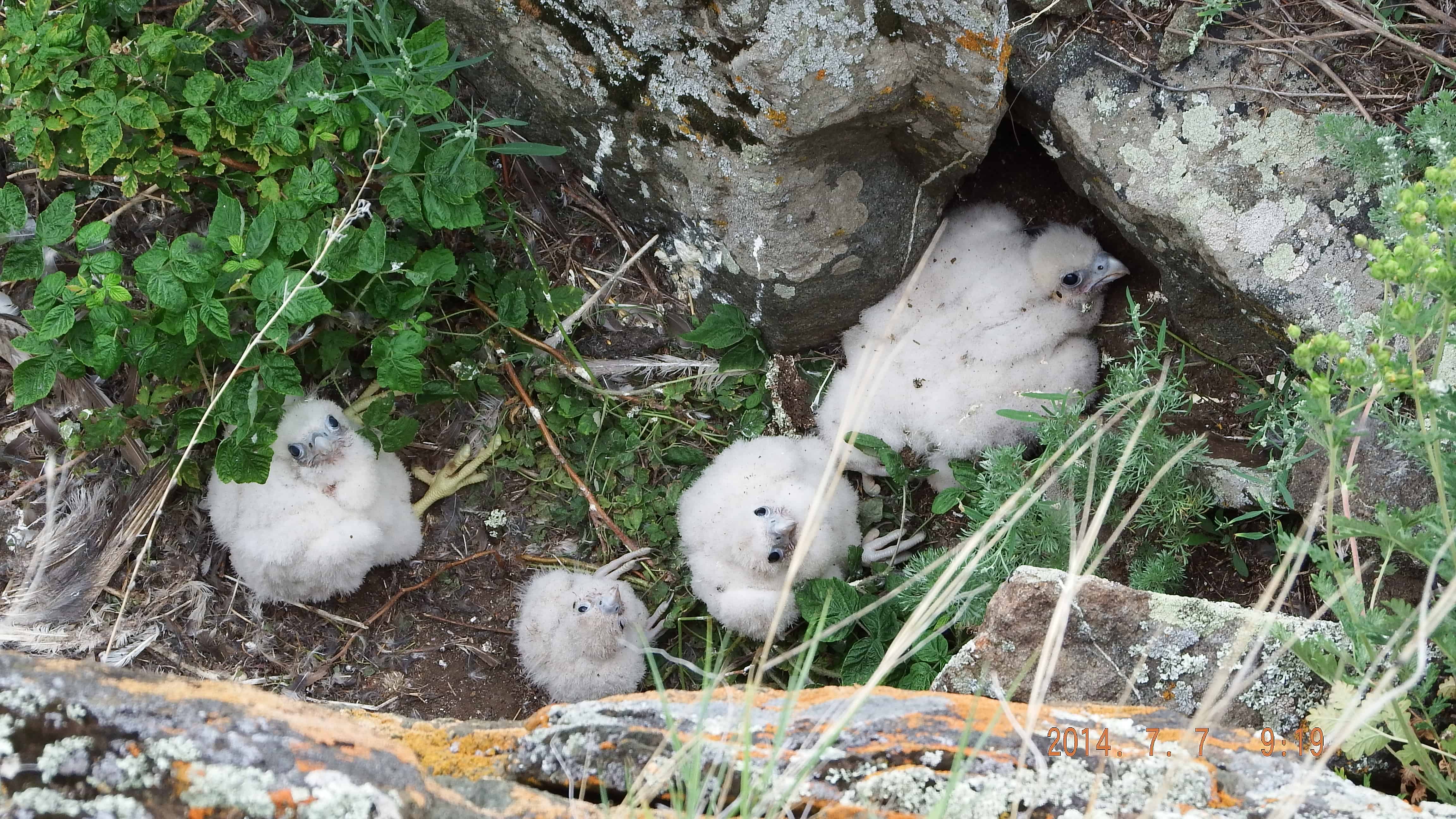
Peregrine falcons chicks look up from their nest in 2014. The chicks hatch at different times, leading to a wide range of ages. ©Skip Ambrose
Ambrose retired from the USFWS in 2005 to work as an independent contractor, and since then he has spent much of his time working on the U.S. National Park Service’s Natural Sounds program, recording the world’s quietest places and determining how much sound pollution animals like sage-grouse can endure. Every summer, come what may, he counts falcons. The U.S. Park Service took over the falcon surveys from the Air Force in the late 1990s, and supported them for another decade. When the funding finally dried up in 2011, Ambrose and his wife and fellow researcher Chris Florian kept going anyway, paying for the trips out of pocket.
Now, the birds seem to have finally hit carrying capacity, with 59 to 60 nests every year since 2012. The birds are showing signs of crowding, with more competition and fewer chicks per nest than in past decades, says Ambrose. They fight all the time, defending territories, stealing food, and occasionally even killing each other. It’s easier to spot them, but harder to tell which bird goes with which nest.
This, Ambrose points out, is probably what the population looked like before DDT nearly destroyed it half a century ago. He plans to keep watching.
“It really will be the first time we’ve studied a healthy, recovered peregrine population,” he says. “The next five or 10 years might be the most interesting.”
Header Image: Skip Ambrose collects prey remains from a peregrine falcon nest on the upper Yukon River 1980. ©Mike Amaral



